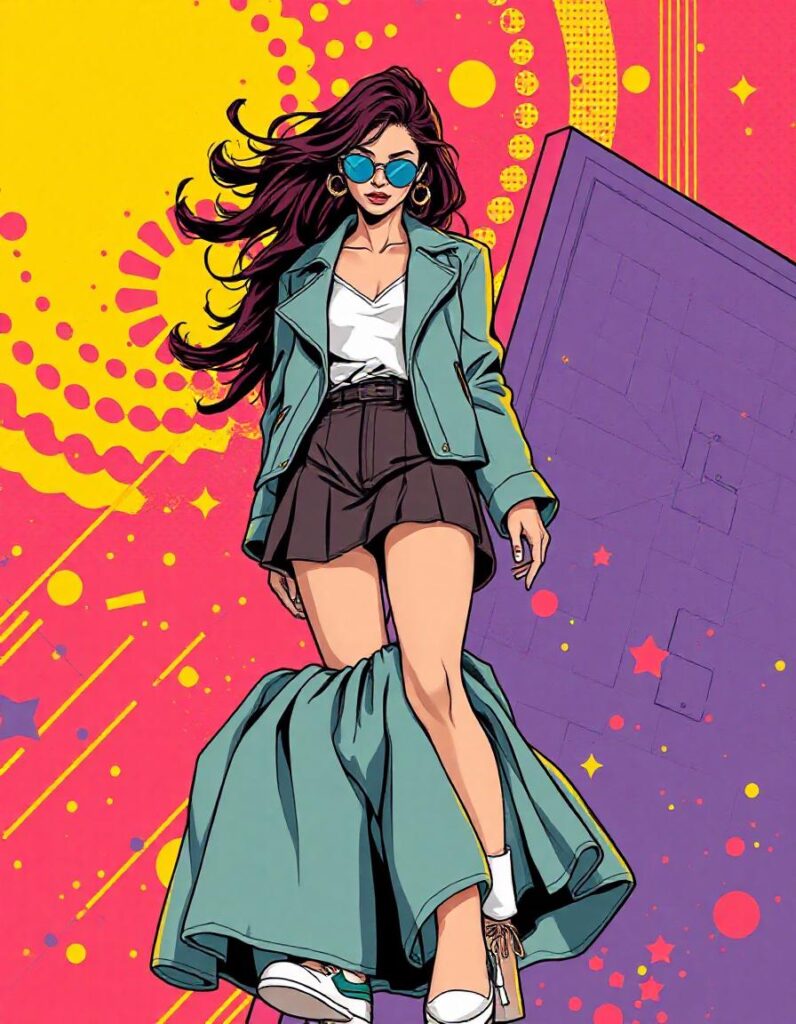The Fashion Industry, Long Steeped In Tradition And Craftsmanship, Has Undergone A Dramatic Transformation In Recent Years Thanks To The Advent Of Technology. From Design And Production To Marketing And Retail, Technology Has Revolutionized Every Aspect Of Fashion, Enabling Designers To Push Boundaries, Innovate, And Respond To Consumer Demands Faster Than Ever Before. Here’s A Look At How Technology Is Revolutionizing Fashion Design And Changing The Way The Industry Operates.
1. Enhancing The Design Process
One Of The Most Significant Impacts Of Technology On Fashion Design Is The Enhancement Of The Design Process Itself. Tools Like Computer-Aided Design (CAD) Software Allow Designers To Create Detailed Digital Sketches, Experiment With Colors, Textures, And Patterns, And Visualize Their Designs In 3D. This Digital Approach Streamlines The Design Process, Reduces The Need For Physical Prototypes, And Allows For Greater Precision And Creativity. With Technology, Designers Can Explore Endless Possibilities And Bring Their Ideas To Life More Efficiently.
2. Facilitating Customization And Personalization
Technology Has Also Made It Easier For Designers To Offer Customization And Personalization, Catering To The Growing Demand For Unique, Individualized Fashion. With The Help Of Digital Tools, Designers Can Create Custom-Fit Garments, Offer Personalized Design Options, And Even Use Algorithms To Predict Consumer Preferences. This Level Of Customization Was Once Unthinkable On A Large Scale, But Technology Has Made It Possible To Deliver Personalized Fashion Without Sacrificing Efficiency Or Quality.
3. Accelerating The Production Cycle
The Fashion Industry Is Known For Its Fast-Paced Nature, And Technology Has Played A Crucial Role In Accelerating The Production Cycle. Advanced Manufacturing Techniques, Such As 3D Printing And Laser Cutting, Allow For Faster, More Precise Production Of Garments And Accessories. These Technologies Enable Designers To Quickly Turn Their Concepts Into Reality, Reducing Lead Times And Allowing Brands To Respond To Trends Almost In Real-Time. The Result Is A More Agile Fashion Industry That Can Meet Consumer Demands More Quickly.
4. Promoting Sustainability
Sustainability Has Become A Major Focus In The Fashion Industry, And Technology Is At The Forefront Of Efforts To Reduce The Industry’s Environmental Impact. Innovations In Fabric Technology, Such As The Development Of Eco-Friendly Materials And Biodegradable Textiles, Are Helping To Create More Sustainable Fashion. Additionally, Technologies Like 3D Printing And On-Demand Manufacturing Reduce Waste By Producing Only What Is Needed, Rather Than Mass-Producing Garments That May Go Unsold. Through These Technological Advances, Designers Are Finding New Ways To Combine Style With Sustainability.
5. Enabling Virtual And Augmented Reality
Virtual And Augmented Reality (VR/AR) Are Changing The Way Designers Conceptualize And Present Their Work. With VR, Designers Can Create Virtual Showrooms And Fashion Shows, Allowing Consumers To Experience Their Collections In A Fully Immersive Environment. AR, On The Other Hand, Allows Consumers To Virtually Try On Clothes, Visualize How A Garment Will Fit, And Make More Informed Purchase Decisions. These Technologies Are Not Only Enhancing The Consumer Experience But Also Providing Designers With New Platforms To Showcase Their Creativity.
6. Fostering Global Collaboration
Technology Has Broken Down Geographic Barriers, Allowing Designers To Collaborate With Teams, Suppliers, And Clients Across The Globe. Digital Communication Tools, Cloud-Based Design Software, And Online Platforms Have Made It Easier Than Ever For Designers To Work With International Partners, Share Ideas, And Coordinate Production. This Global Connectivity Has Expanded The Possibilities For Creativity And Innovation In Fashion Design, Enabling Designers To Tap Into A World Of Resources And Inspiration.
7. Revolutionizing Fashion Marketing
In Addition To Revolutionizing The Design Process, Technology Has Also Transformed The Way Fashion Is Marketed And Sold. Social Media, E-Commerce, And Digital Marketing Tools Have Given Designers Direct Access To Consumers, Allowing Them To Build Brands, Engage With Audiences, And Drive Sales Online. Influencer Marketing, Data Analytics, And Targeted Advertising Are Just A Few Examples Of How Technology Is Helping Designers Reach A Global Audience And Grow Their Businesses.
8. Advancing Textile Innovation
Technology Is Also Revolutionizing The Fabrics And Materials Designers Work With. Innovations In Textile Science Have Led To The Development Of Smart Fabrics That Can Change Color, Monitor Health, Or Provide Environmental Protection. These Advanced Materials Offer Designers New Ways To Innovate And Create Garments That Are Not Only Stylish But Also Functional And Responsive To The Wearer’s Needs. As Textile Technology Continues To Evolve, The Possibilities For Fashion Design Are Expanding Beyond What Was Once Imaginable.
Conclusion
The Role Of Technology In Revolutionizing Fashion Design Cannot Be Overstated. From Enhancing The Creative Process To Promoting Sustainability, Accelerating Production, And Transforming Marketing Strategies, Technology Has Opened Up A World Of Possibilities For Designers. As The Fashion Industry Continues To Evolve, Embracing Technological Innovations Will Be Essential For Designers Who Want To Stay Ahead Of The Curve, Drive Innovation, And Create The Future Of Fashion. The Fusion Of Creativity And Technology Is Shaping A New Era In Fashion Design, Where The Only Limit Is The Designer’s Imagination.
